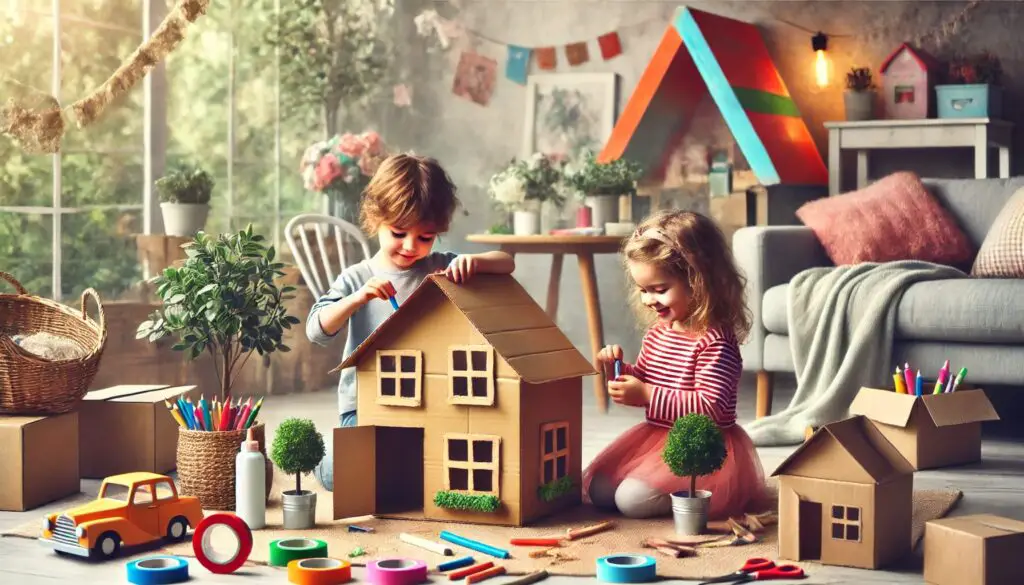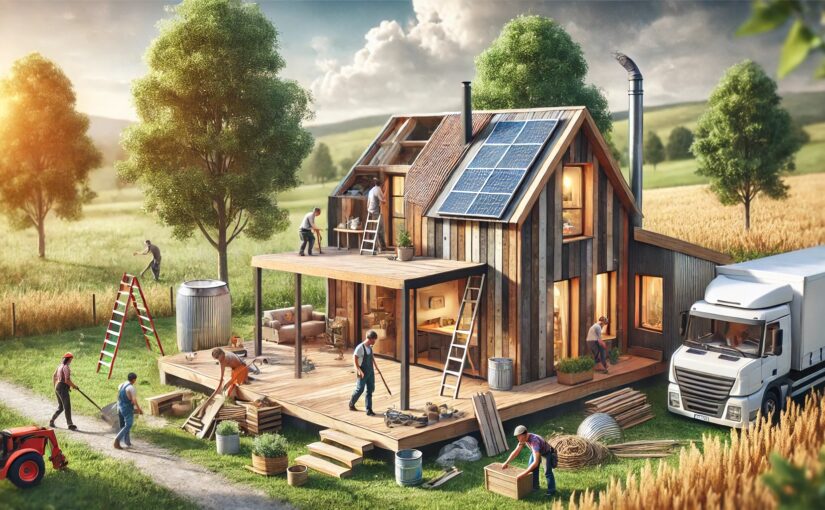I was watching my children the other day, crafting little houses out of cardboard and tape, their faces beaming with pride and excitement. As I observed them, a thought crossed my mind: wouldn’t it be amazing if building our dream homes could be that simple and affordable? Just like my kids, we could use what we already have, adapt to the available space, and make it work without paying off a credit for the rest of our lives.
Start with What You Have
The first step in building your dream house on a budget is to take stock of what you already have. Look around and identify materials and items that can be repurposed. Do you have old wooden pallets? They can be transformed into rustic furniture or even used as part of your new home’s structure. Leftover bricks from a previous project? They could become a charming garden path or a sturdy foundation. Maybe some neighbors have some materials left from their recent DIY projects?

Smart Design and Efficient Space Use
When working with limited funds, every square foot counts. Clever, space-efficient designs can make a smaller home feel spacious and comfortable. Open floor plans, multi-purpose rooms, and built-in storage solutions can maximize your living area. Therefore, consider incorporating loft spaces for sleeping or storage, and use foldable or movable furniture to keep your home versatile and functional.
Affordable Materials and DIY
Building your dream home doesn’t mean you have to use the most expensive materials. Instead, look for affordable alternatives that don’t compromise on quality. Reclaimed wood, for example, can add character and warmth to your home without costing a fortune. Visit local salvage yards or online marketplaces for second-hand materials that can be given a new lease of life.
Another way to save money is by rolling up your sleeves and getting involved in the construction process. While some tasks require professional skills, many aspects of homebuilding can be tackled with a bit of research and elbow grease. Painting, tiling, and even some carpentry work can be done by enthusiastic DIYers.
Land: The Game Changer
A significant portion of your budget will likely go toward purchasing land, and this is where location becomes a critical factor. Coastal real estate markets tend to be pricier, so finding a plot in a less expensive area can make a huge difference. Rural locations or smaller towns often offer more affordable land options. Keep an open mind and be flexible with your location choices to get the most bang for your buck.
Embrace Sustainability
Sustainable building practices not only benefit the environment but can also save you money in the long run. Incorporating energy-efficient appliances, solar panels, and rainwater harvesting systems can reduce utility bills and add value to your home. Natural insulation materials like straw bales or sheep’s wool can keep your home warm in winter and cool in summer without the high cost of traditional insulation.
Financing and Planning
Finally, careful planning and smart financing are essential when building on a budget. Create a detailed budget and stick to it, accounting for unexpected expenses. Look into affordable financing options such as government grants or low-interest loans for first-time home builders.
So, Building your dream house with a little investment is entirely possible with creativity, resourcefulness, and careful planning. Just like my children crafting their cardboard homes, you can create a space that reflects your personality and meets your needs without going overboard on expenses. All real estate ventures require thoughtful consideration, but with these tips, your dream home can become a reality without the hefty price tag.
